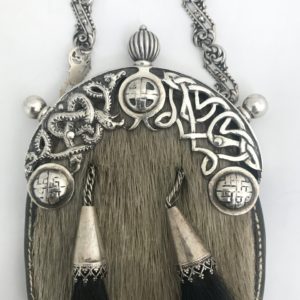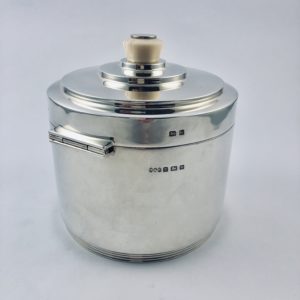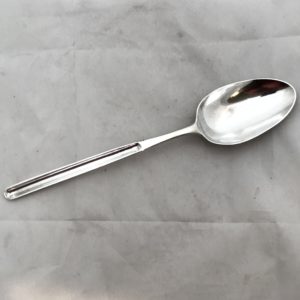Description
A heavy pair of cast sterling silver peppers in the form of a shod horse’s hoof, ankle and lower leg, the latter detachable with its top gilded and pierced in the pattern of a stylized anthemion.
Dimensions & Weights
Height: 7 cm / 2 ¾ ins Width: 3 cm / 1 3/16 ins
Depth: 3.5 cm / 1 3/8 ins
Weight (pair): 148 gms / 4.8 ozT.
Hallmarks

On the hoof just below the ankle and also on the detachable leg: Lion Passant Gardant (Sterling); Leopard’s Head (London); upper case ‘G’ (1882-3); duty mark Queen Victoria
Patent Registration Mark: On the underside of the hoof, a Patent Office Registry diamond mark in the format used for designs registered in the years 1868-1883 showing: Class I (metal), registration day ‘28’, month letter ‘K’ (November) and year letter ‘P’ (1877).
Edward Henry Stockwell
Born in 1839, Edward was the son of Henry William Stockwell, a Soho jeweller who, from the 1820s, had specialised in ‘presentation swords and cup and bottle mounts in gold and silver’ for high-end retailers. Edward entered his first mark in 1865 on his father’s death, took over the business at 15 Greek Street from his mother around 1869, and subsequently traded as an ornamental gold, silver and metal manufacturer. In 1876, just a year before registering several scent flask and pepper ‘bottle’ designs (including this one – see below), Edward was awarded a competition prize of £25 by the Goldsmiths’ Company for a design for a presentation casket.
Novelty silver items such as this, popular throughout the nineteenth century, assumed much importance after the mid-1870s when the ordinary silverware that filled shop windows was in so-called ‘Queen Anne’ or ‘Antique’ styles of the eighteenth century. In 1891, The Art Journal, noting the diversion of patronage from silver by the beauty of glass and china wares, observed that: “Five years ago tables were profusely dotted with small models of pugs, eggs, fish, poppy-heads, etc., for pepper and so on; the corner salts being perhaps pigs, forsooth! whose curly tails made the spoon handle”.









